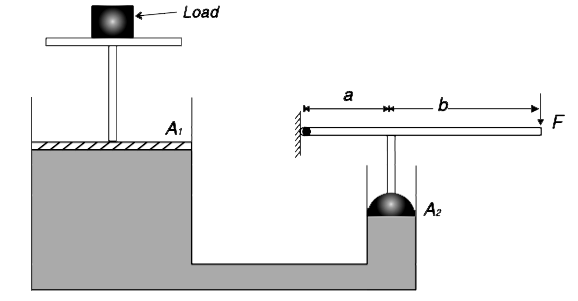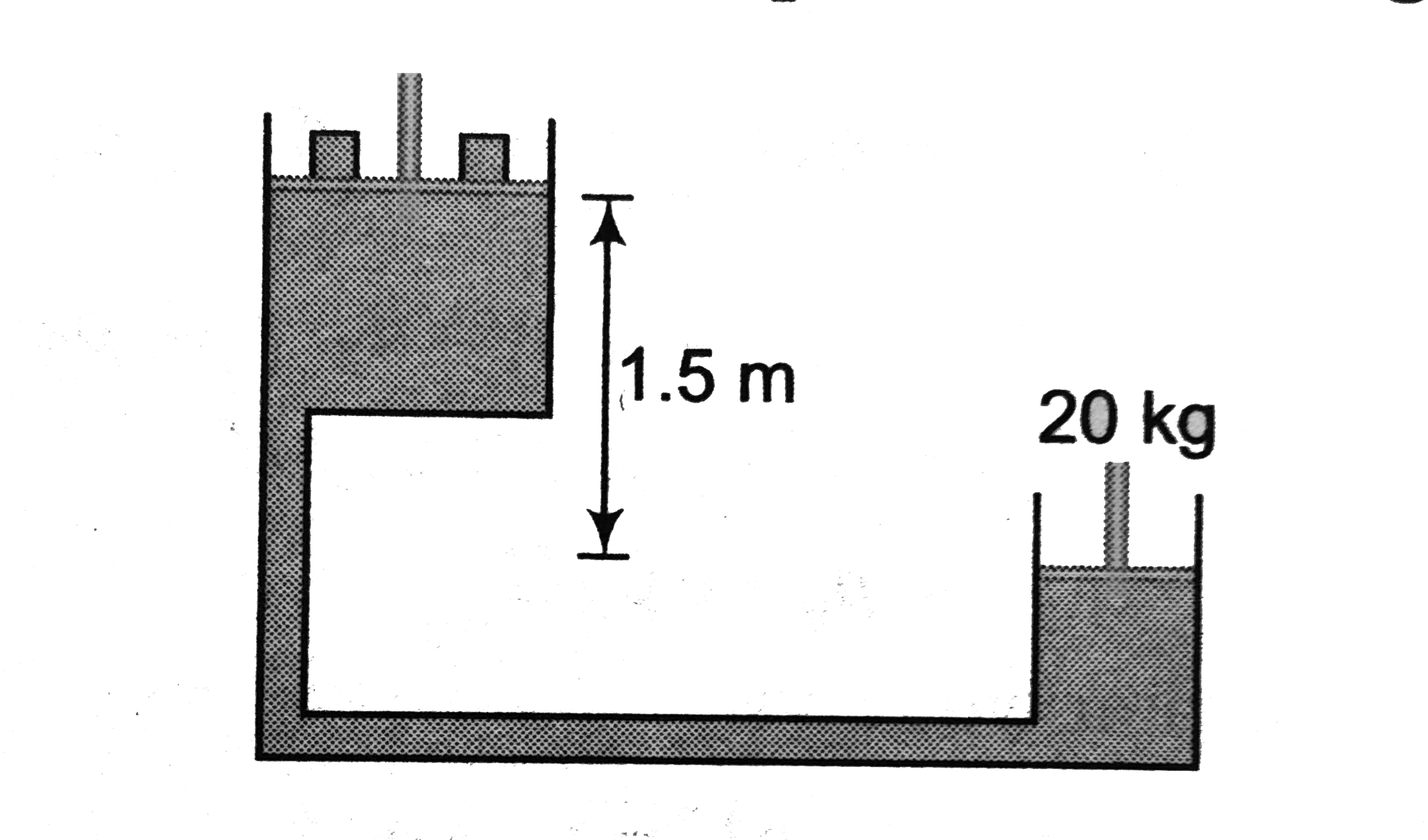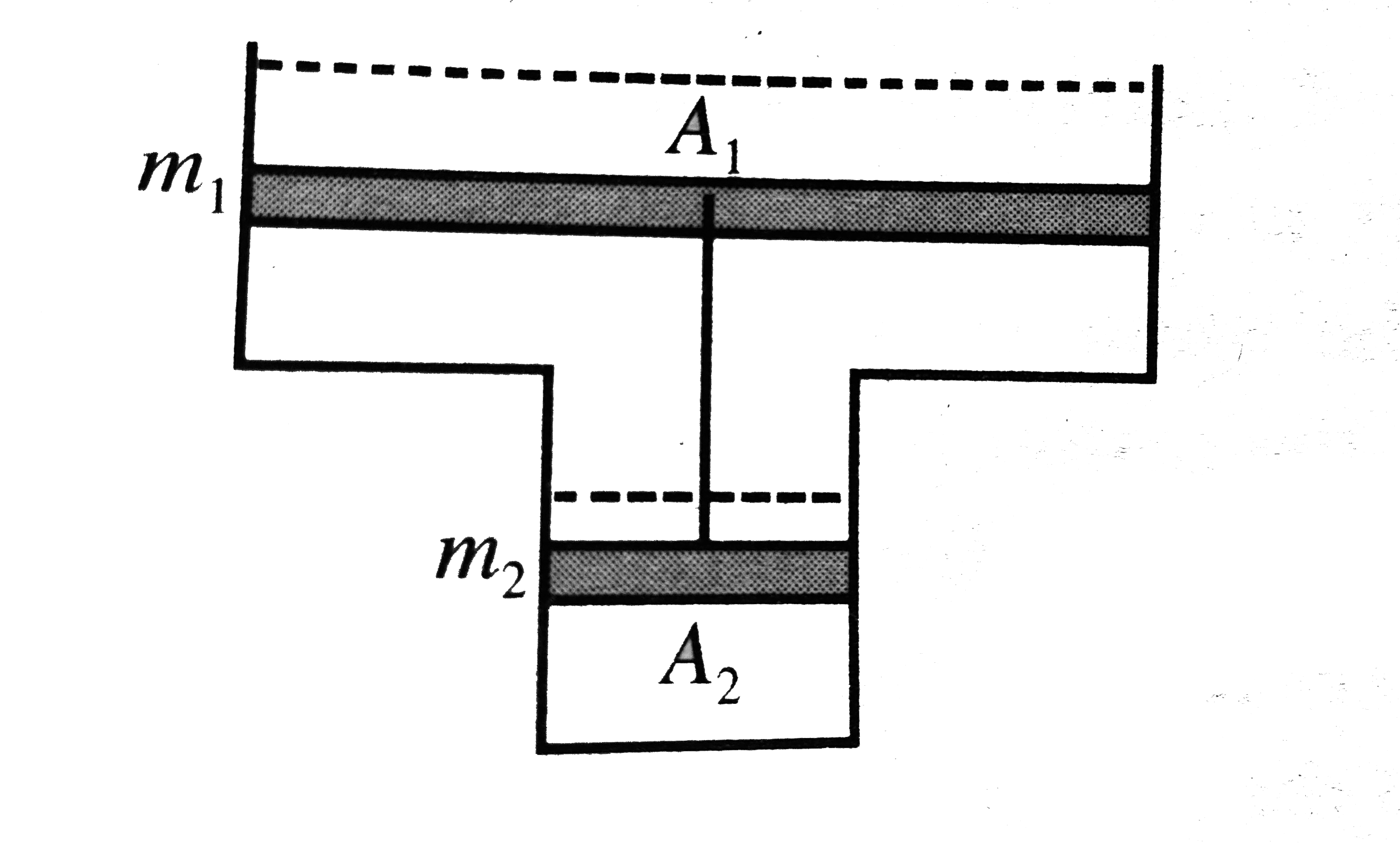A hydraulic automobile lift is designed to lift cars with a maximum mass of 300 kg. the area of cross-section of the piston carrying the load is 425cm3. What maximum pressure would smaller piston have to bear?
Pressure on the piston due to car
=Weight of carArea of piston
P=3000×9.8425×10−4Nm−2=6.92×105Pa
This is also the maximum pressure that the smaller piston would have to bear.
Topper's Solved these Questions
- MECHANICAL PROPERTIES OF FLUIDSBOOK - NCERTCHAPTER - MECHANICAL PROPERTIES OF FLUIDSEXERCISE - EXERCISE
31 Videos
- LAWS OF MOTION BOOK - NCERTCHAPTER - LAWS OF MOTION EXERCISE - EXERCISE
40 Videos
- MECHANICAL PROPERTIES OF SOLIDSBOOK - NCERTCHAPTER - MECHANICAL PROPERTIES OF SOLIDSEXERCISE - EXERCISE
21 Videos
Similar Questions
A hydraulic automobile lift is designed to lift cars with a maximum mass of 3000Kg. The area of cross section of the piston carrying the load is 425cm2. What maximum pressures would the smaller piston have to bear?
View SolutionWhen a pressure measuring device is immersed in a liquid, a restoring force of 2 N is exerted by the spring. If the area of cross-section of the pistion is 10 cm2, what pressure does the fluid exert on the piston?
View Solution
Knowledge Check
The diameter of the piston of a hydraulic automobile is D metre. What pressure, in atmosphere is required to lift a car of mass m kg ?
A4mgπD2×105B2mgπD2CmgπD2D105×4mgπD2In a car lift , compressed air with a gauge pressure of 4.0×105 Pa is used to raise a piston with a circular cross-sectional area . If the radius of the piston is 0.17 m , what is the maximum mass that can be raised using this piston ?
A530 kgB3700 kgC9800 kgD22,000 kg
Consider a vertical tube open at bothh ends. The cube consists of two parts, each of different cross-sections and each parth having a piston which can move smoothly in respective tubes. The two pistons are joined together by an inextensible wire. The combined mass of the two piston is 5 kg and area of cross-section of the upper piston is 10cm2 greater than that of the lower piston. Amount of gas enclosed by the pistons is one mole. When the gas is heated slowly, pistons move by 50cm. Find rise in the temperature of the gas, in the form 25X/RK where R is universal gas constant. Use g=10m/s2 and outside pressure =105N/m2).
Fill value of X in the answer sheet.

View SolutionThe figure shows a schematic layout of hydraulic jack. The load to be raised weighs 20,000N. The area of cross section of the two pistons are A1=50cm2 and A2=10cm2. The force (F) is applied at theend of a ligh lever bar as shown in the figure. Lenghts a and b are 4cm and 36cm respectively. Find the force (F) required to raise the load slowly.

View SolutionAn object of weight 500kgwt is lifted by using a hydraulic press. The radii of the cross sections of the pump piston and press piston are 10 cm and 20 cm, respectively. Calculate the effort required to lift the object. Calculate the displacement of the load if the effort is moved through a distance of 20 cm.
View SolutionFigure shown a hydraulic press with the larger piston if diameter 35 cm at a height of 1.5 cm at a height of 1.5 m relative to the smaller piston of diameter 10cm. The mass on the smaller piston is 20 kg. What is the force exerted on the load by the larger piston? The density of oil in the press is 750kh/m3 . (Take g=9.8m/s2)
 .
.
View SolutionConsider a vertical tube open at both ends. The tube consistss of two parts, each of different cross sections and each part having a piston which can move smoothly in respective tubes. The two piston which can move smoothly in respective tube wire. The piston are joined together by an inextensible wire. The combined mass of the two piston is 5kgand area of cross section of the upper piston is 10cm2 greater than that of the lower piston. Amount of gas enclosed by the pistons is 1mol. When the gas is heated slowly, pistons move by 50cm. Find the rise in the temperature of the gas in the form X/RK, where R is universal gas constant. Use g=10m/s2 and outside pressure =105N/m2).

View Solution_E01_200_Q01.png)
For the system shown in the figure the cylinder on the left at L has a mass of 600 kg and a cross sectional area of 800cm2 the piston on the right at S has cross sectional area 25cm2 and negligible weight if the apparatus is filled with oil (ρ=0.75gm/cm3) find thhe force F required to hold the system in equilibrium.
View Solution
